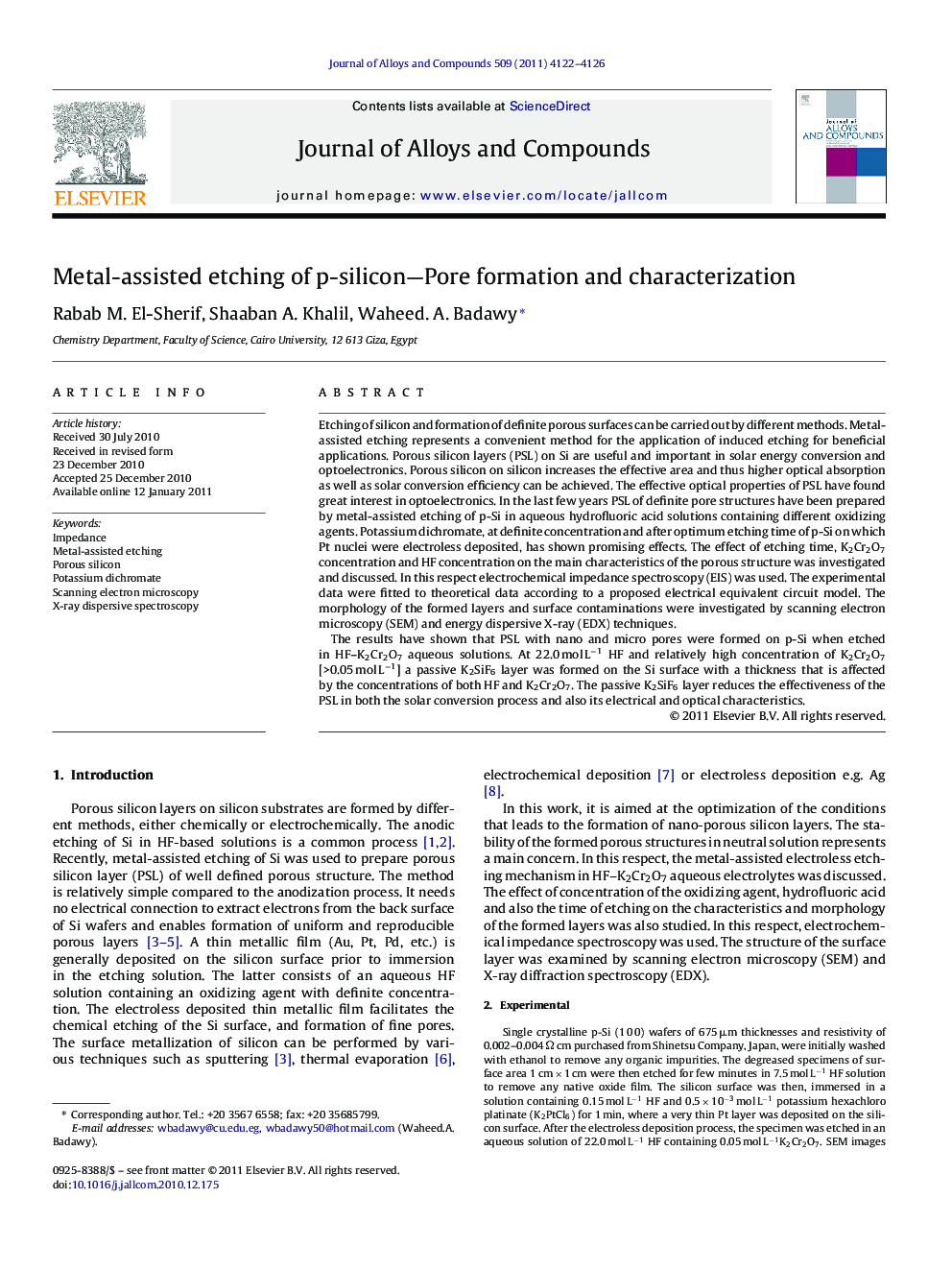| Article ID | Journal | Published Year | Pages | File Type |
|---|---|---|---|---|
| 1617580 | Journal of Alloys and Compounds | 2011 | 5 Pages |
Etching of silicon and formation of definite porous surfaces can be carried out by different methods. Metal-assisted etching represents a convenient method for the application of induced etching for beneficial applications. Porous silicon layers (PSL) on Si are useful and important in solar energy conversion and optoelectronics. Porous silicon on silicon increases the effective area and thus higher optical absorption as well as solar conversion efficiency can be achieved. The effective optical properties of PSL have found great interest in optoelectronics. In the last few years PSL of definite pore structures have been prepared by metal-assisted etching of p-Si in aqueous hydrofluoric acid solutions containing different oxidizing agents. Potassium dichromate, at definite concentration and after optimum etching time of p-Si on which Pt nuclei were electroless deposited, has shown promising effects. The effect of etching time, K2Cr2O7 concentration and HF concentration on the main characteristics of the porous structure was investigated and discussed. In this respect electrochemical impedance spectroscopy (EIS) was used. The experimental data were fitted to theoretical data according to a proposed electrical equivalent circuit model. The morphology of the formed layers and surface contaminations were investigated by scanning electron microscopy (SEM) and energy dispersive X-ray (EDX) techniques.The results have shown that PSL with nano and micro pores were formed on p-Si when etched in HF–K2Cr2O7 aqueous solutions. At 22.0 mol L−1 HF and relatively high concentration of K2Cr2O7 [>0.05 mol L−1] a passive K2SiF6 layer was formed on the Si surface with a thickness that is affected by the concentrations of both HF and K2Cr2O7. The passive K2SiF6 layer reduces the effectiveness of the PSL in both the solar conversion process and also its electrical and optical characteristics.
Research highlights▶ The paper represents a part of active research in the field of materials science. ▶ It specifies the proper conditions to obtain porous silicon layers on Si in the nano structure range for solar energy conversion and optoelectronic applications.
